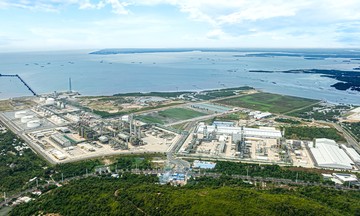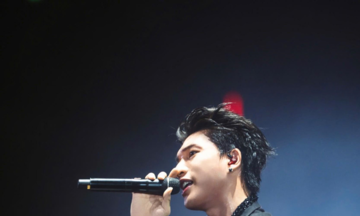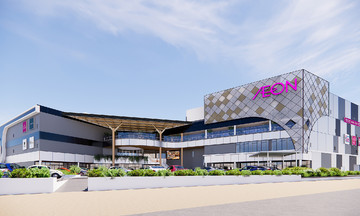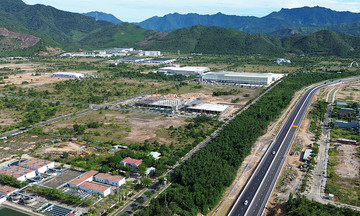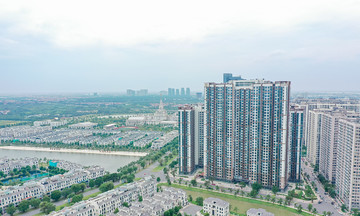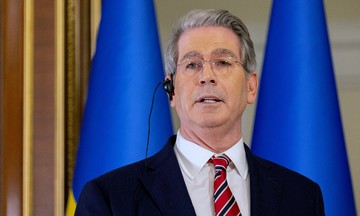Tesla's stock surged over 8% on 23/6 after the company launched its driverless robotaxi service, a long-awaited project spearheaded by CEO Elon Musk.
The electric vehicle manufacturer deployed 10-12 vehicles to offer rides to passengers aged 18 and older in Austin, Texas. Trips within a designated area have a fixed fare of 4.2 USD. While the vehicles operate autonomously, a "safety supervisor" sits in the front seat.
Social media influencers have started sharing their robotaxi experiences. Videos show the vehicles navigating busy streets by slowing down and yielding to oncoming traffic.
Wedbush Securities analyst Dan Ives described the experience as "comfortable, safe, and personalized." "At one point, we were on a narrow, uphill road with cars parked on both sides, oncoming traffic, and people getting in and out of cars. The robotaxi maneuvered skillfully, patiently, and safely," he said.
According to Reuters, the success of this robotaxi trial is crucial for Tesla as Musk has shifted the company's focus towards autonomous vehicles and robots, setting aside plans to dominate the mass-market electric vehicle sector amidst competition from China and slowing demand.
In Quarter I, Tesla's sales dropped 13%, reaching their lowest point in nearly three years. Last month, sales continued to decline in major European markets like the UK, Germany, and Italy.
 |
A Tesla robotaxi drives on South Congress Avenue in Austin, Texas, on 22/6. Photo: Reuters |
A Tesla robotaxi drives on South Congress Avenue in Austin, Texas, on 22/6. Photo: Reuters
Experts say the future of Tesla's driverless taxi service hinges on scalability and building public trust in its safety.
First is scalability. Tesla's initial paid robotaxis operate within a limited area of Austin, while Google-backed Waymo already operates in Los Angeles, San Diego, Austin, and other cities. Waymo recently reached the milestone of 10 million paid rides.
Musk has pledged rapid expansion to other cities, aiming for hundreds of thousands, even 1 million robotaxis next year. How can such rapid growth be achieved?
The "secret weapon" is software updates. Robotaxis use an enhanced version of Tesla's Full Self-Driving (FSD) software. Thus, millions of Tesla owners could potentially update their software to turn their cars into robotaxis.
Essentially, Musk's vision is for car owners to let their Teslas operate as taxis, earning money while they work or travel. Last month, he called this the "Airbnb for cars" model.
"Instead of your car sitting in a parking lot, it can make money," Musk said.
Another factor Musk believes will facilitate rapid deployment is Tesla's reliance solely on existing cameras for navigation. Waymo, in contrast, uses a more expensive approach, supplementing cameras with lasers and radar.
However, some Wall Street experts remain skeptical. "How quickly can he scale the fleet? Starting with a dozen or so vehicles is very small," questioned Garrett Nelson, an analyst at CFRA. Seth Goldstein of Morningstar believes Musk is overpromising. He predicts it will take until at least 2028 for robotaxis to become widespread in Austin. "The testing will take time," he noted.
Beyond time, robotaxis need to demonstrate greater safety to gain public trust and secure expansion permits from regulators. On 23/6, the National Highway Traffic Safety Administration (NHTSA) contacted Tesla for information after videos circulated on social media showing a robotaxi allegedly driving in the wrong lane and another speeding.
The NHTSA emphasized that it "does not pre-approve any new vehicle technologies or systems. Instead, manufacturers must self-certify that each vehicle meets all applicable Federal Motor Vehicle Safety Standards, and NHTSA will investigate incidents that may involve a safety defect."
In response, Tesla stated that robotaxi safety information is confidential and cannot be disclosed. Meanwhile, experts also question the effectiveness of the FSD software. The technology relies primarily on cameras and AI, lacking backup sensors like lidar and radar. This raises concerns about safety in fog, heavy rain, and bright sunlight.
Since 10/2024, the NHTSA has been investigating crashes involving Tesla vehicles using FSD in limited visibility conditions. The investigation covers 2.4 million Tesla vehicles equipped with the software, following four reported crashes, including one fatality in 2023.
Last week, a group of Democratic lawmakers in Texas urged Musk to postpone the robotaxi rollout in the state until September to ensure vehicle safety.
"We believe this is in everyone’s best interest to both ensure public safety and build confidence in Tesla’s operations," the letter stated. From 1/9, autonomous taxi services in Texas will require state licensing due to bipartisan caution.
Despite the challenges and skepticism, Musk has many supporters. Tesla shareholders have backed him for years as he overcame obstacles to build a successful electric vehicle company, generating significant profits.
Tesla's stock bottomed out in March and has partially recovered in recent months, largely due to optimism about the robotaxi rollout and its rapid expansion, potentially dominating the autonomous taxi industry. A decade ago, Tesla's stock price was around 18 USD; it closed at 348.68 USD on 23/6.
Even skeptics like Goldstein acknowledge that Musk sometimes gets things spectacularly right. He has revolutionized the auto industry by convincing people to buy expensive electric cars, brought Starlink satellite internet service to rural areas, and recently landed an unmanned SpaceX rocket back on Earth.
"Maybe Musk’s timeline isn’t realistic, but he has developed futuristic technology products," Goldstein said.
Phien An (according to Reuters, AP)






